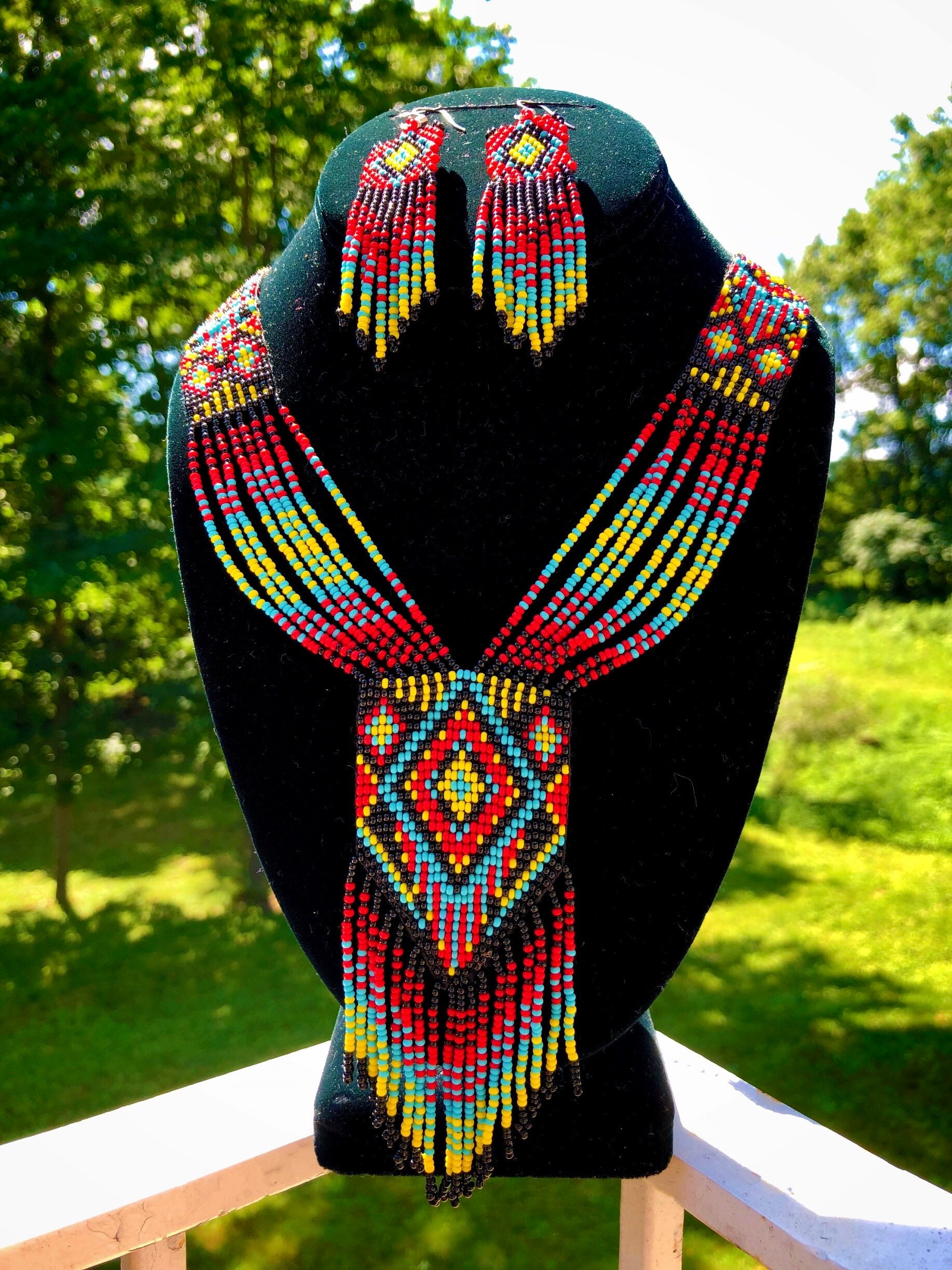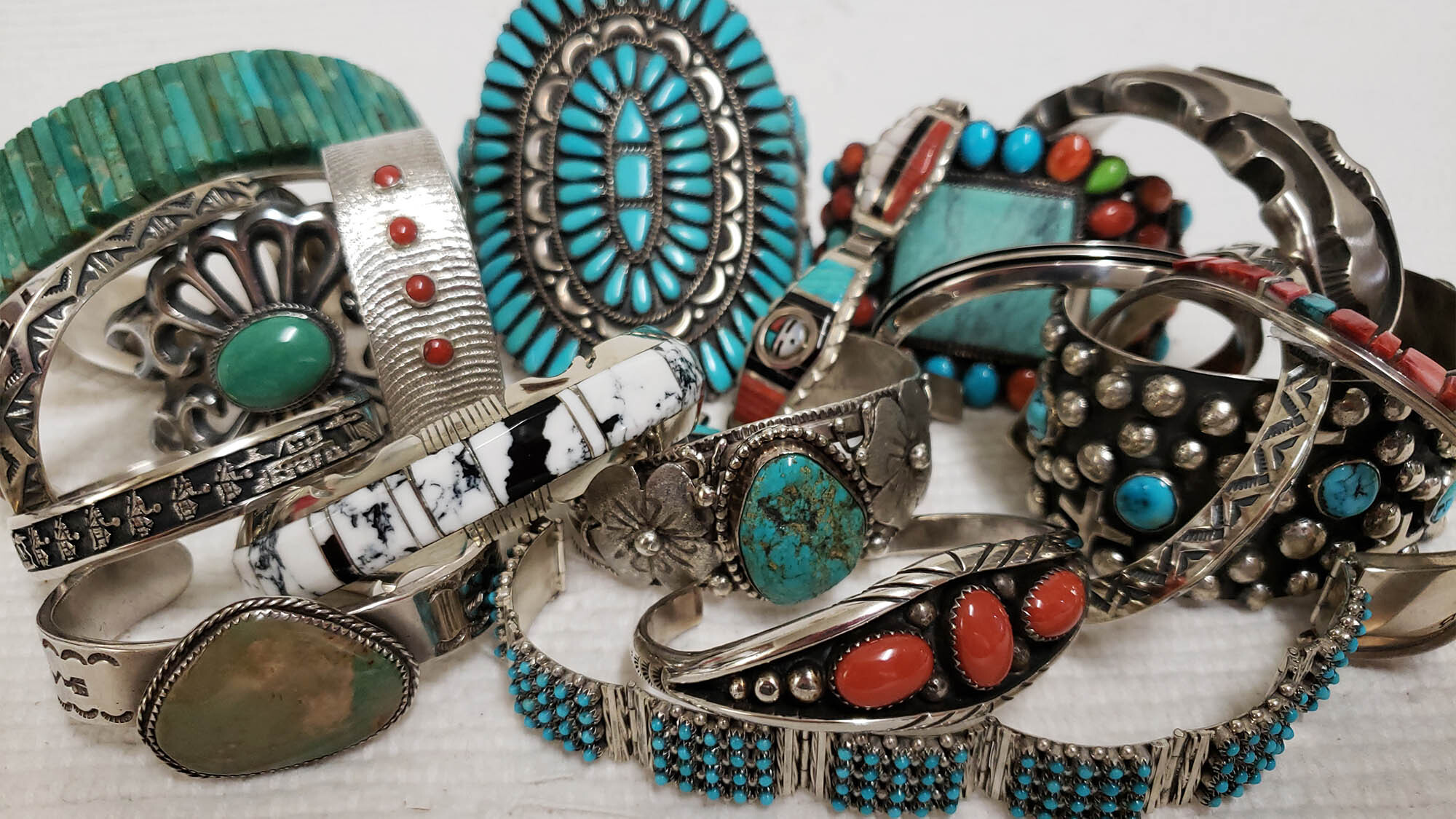
More Than Adornment: Unraveling the Rich Tapestry of Native American Jewelry
NEW YORK, NY – In a world often driven by fleeting trends and mass-produced commodities, certain objects retain a profound, enduring power. Native American jewelry is one such phenomenon. Far from being mere baubles or fashionable accessories, these intricate pieces are vibrant conduits of history, spirituality, identity, and artistic mastery, woven from centuries of tradition and a deep connection to the land.
To call it simply "jewelry" is to diminish its essence. Each bracelet, necklace, ring, or pair of earrings tells a story – of the earth from which its materials were sourced, of the hands that shaped it, and of the culture it represents. It is a living art form, a testament to resilience, creativity, and spiritual depth that continues to evolve while honoring its ancient roots.

A History Forged in Earth and Time
The origins of Native American jewelry predate European contact by millennia. Indigenous peoples across the vast North American continent adorned themselves with materials readily available from their natural surroundings: shells from the coasts, bones and teeth from animals, seeds, wood, and stones like turquoise, argillite, pipestone, and obsidian. These early pieces were not just decorative; they served ceremonial purposes, signified social status, offered protection, or acted as forms of currency and trade.
"Our ancestors didn’t just pick up a pretty stone and make something," explains Sarah Begay, a Navajo silversmith whose family has been making jewelry for generations. "Every material had meaning. Turquoise was the sky stone, a piece of heaven. Shells connected us to the water, the source of life. The jewelry was an extension of our prayers, our connection to the land and the spirit world."
The arrival of the Spanish in the 16th century, particularly in the American Southwest, marked a pivotal shift. With them, the Spanish brought silver coins, metal tools, and new techniques. While initially used for trading and melting down, by the mid-19th century, Navajo artisans began adapting Spanish silversmithing techniques, transforming raw silver into magnificent adornments. This marked the birth of what many now recognize as iconic Native American jewelry, particularly from the Southwestern tribes.
The advent of the railroad in the late 19th and early 20th centuries further propelled this art form onto a national stage. Tourists traveling West sought authentic souvenirs, creating a commercial market that spurred innovation and production, even as it sometimes led to pressures for artists to mass-produce.
The Distinctive Voices of the Southwest: Navajo, Zuni, and Hopi
While Native American jewelry encompasses an incredible diversity across hundreds of tribes, the Southwestern styles, particularly those of the Navajo, Zuni, and Hopi, are arguably the most recognized globally, each possessing a unique aesthetic and set of techniques.
Navajo Jewelry: Often characterized by its bold, substantial presence, Navajo jewelry is renowned for its heavy gauge silverwork. Early Navajo silversmiths, known for their mastery of the craft, developed techniques like stamping (impressing designs onto the silver with hand-forged tools), repoussé (hammering designs from the back to create a raised relief), and casting (pouring molten silver into molds, including "tufa casting" using porous volcanic rock).

Their pieces frequently feature large, often irregularly shaped turquoise stones, set simply to emphasize the stone’s natural beauty. Iconic Navajo designs include the squash blossom necklace, a powerful symbol believed to have originated from Spanish-Mexican influence (the "naja" or crescent pendant) combined with elements inspired by squash blossoms, representing agricultural abundance. Concho belts, with their large, oval or butterfly-shaped silver pieces, are another quintessential Navajo expression.
Zuni Jewelry: In stark contrast to the robust Navajo style, Zuni jewelry is celebrated for its intricate, delicate stone settings and mosaic work. Zuni artisans are master lapidaries, renowned for their precision in cutting and polishing tiny stones. Their signature styles include:
- Petit Point: Tiny, teardrop, oval, or round stones, often turquoise, set individually in fine silver bezels, forming clusters or patterns.
- Needlepoint: Even finer, needle-like slivers of stone, creating delicate, feather-like textures.
- Inlay and Mosaic: Precisely cut pieces of turquoise, coral, jet, and mother-of-pearl are meticulously fitted together to create geometric patterns or pictorial scenes, often depicting animals or spiritual figures, then polished smooth within a silver channel.
- Channel Inlay: Similar to inlay, but with individual sections of stone separated by thin silver dividers.
Zuni artists are also famous for their fetish carvings, small animal figurines (often bears, wolves, or birds) made from stone, believed to embody the spirit of the animal, and sometimes incorporated into necklaces or pins.
Hopi Jewelry: Hopi jewelry stands out for its elegant simplicity and the sophisticated overlay technique. Developed in the 1930s and 40s, this method involves two layers of silver. The top layer has a design cut out of it, while the bottom layer is oxidized (darkened) to create a contrasting background. The two layers are then soldered together, and the raised top layer is polished to a high sheen, allowing the dark, recessed areas to make the design pop.
Hopi designs are deeply symbolic, often depicting clan symbols, Katsina figures, agricultural motifs (like corn and rain clouds), and elements from their spiritual narratives. The subtlety of the overlay allows the narrative and symbolism to take center stage, often without any stones.
Beyond the Southwest: A Continent of Artistry
While the Southwest is prominent, it’s crucial to remember that Native American jewelry is a vast and diverse field.
- Plains Tribes: Renowned for their exquisite beadwork, using tiny glass seed beads (originally trade beads from Europe, later mass-produced) to create geometric patterns, floral designs, and pictorial scenes on leather. Historically, quillwork (using flattened, dyed porcupine quills) was a prevalent form of adornment and decoration before beads became widely available.
- Great Lakes Tribes: Also known for elaborate beadwork, often incorporating floral motifs and loom-woven patterns.
- Pacific Northwest Coastal Tribes: Famous for intricate carvings in materials like argillite (a black slate), wood, and silver, depicting totemic animals and mythological figures in the distinctive Haida, Tlingit, and Kwakwaka’wakw styles. Silver pieces often feature repoussé and engraving.
- Eastern Woodlands Tribes: Historically used shell beads (wampum), porcupine quills, and moose hair tufting for decorative and ceremonial purposes.
Materials and Their Meanings
Central to Native American jewelry is the profound respect for materials, each imbued with cultural and spiritual significance:
- Turquoise: The most iconic stone, revered by many Southwestern tribes as "sky stone" or "stone of life." It is associated with protection, healing, good fortune, and the life-giving properties of water and sky. The color varies from light blue to deep green, depending on the presence of copper and iron.
- Silver: A relatively new material in the history of Native American jewelry, yet it quickly became central to the Southwestern aesthetic. Its malleability allowed for intricate designs and substantial forms.
- Coral: Often paired with turquoise, coral’s red color is associated with the lifeblood and energy.
- Jet: A fossilized wood, deep black in color, often used in inlay work, symbolizing protection and stability.
- Shell (Mother-of-Pearl, Abalone): Symbolizes water, purity, and connection to the ocean. Abalone, with its iridescent shimmer, is particularly prized.
- Other Stones: Lapis lazuli, onyx, malachite, and spiny oyster shell are also commonly used, often for their vibrant colors and contrasting textures.
The Art of Authenticity and the Challenge of Appropriation
In recent decades, the market for Native American jewelry has exploded, bringing both opportunities and challenges. A significant concern is the proliferation of inauthentic "Native-style" jewelry, often mass-produced overseas or by non-Native individuals, sometimes falsely marketed as authentic. This not only misleads consumers but also deprives Native artists of their rightful income and cultural recognition.
"When you buy a piece of Native American jewelry, you’re not just buying an object," says Dr. Anya Sharma, an anthropologist specializing in Indigenous arts. "You’re investing in a cultural legacy, supporting a family, and contributing to the continuation of an art form that has survived generations of immense challenges. It’s crucial to know who made it and where it comes from."
To ensure authenticity and ethical purchasing, experts recommend:
- Buying directly from Native artists at powwows, tribal markets, or reputable galleries specializing in Native art.
- Looking for artist hallmarks or signatures.
- Educating oneself about different tribal styles and techniques.
- Being wary of extremely low prices for what purports to be high-quality, authentic work.
A Living Legacy
Today, Native American jewelry continues to thrive, with contemporary artists pushing boundaries while remaining deeply rooted in tradition. They experiment with new materials, incorporate modern design elements, and address contemporary themes, all while honoring the techniques and spiritual connections passed down through generations.
From the ceremonial pieces of ancient times to the bold silverwork of the Navajo, the delicate inlay of the Zuni, the symbolic overlay of the Hopi, and the vibrant beadwork of the Plains, Native American jewelry is a powerful narrative woven in metal, stone, and spirit. It is a testament to the enduring creativity, resilience, and profound cultural identity of Indigenous peoples – a legacy that truly is more than mere adornment. It is a piece of living history, worn close to the heart.


